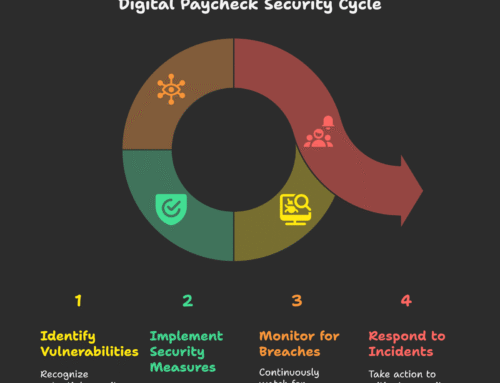Cast your mind back to 1994, if you’re old enough to do so. Remember, Friends was a new sitcom on television, not a well hyped reunion tour. The internet was a newfangled thing, and the first online job website, Monster.com, had just launched there.
Much has changed in the intervening quarter century, yet some human resources departments still believe their recruitment tactics are up-to-date as long as their job postings are on the most popular sites. The truth is, recruitment has come a long way, baby. Here are some signs your practices aren’t keeping up.
1. You think social media is only for the Kardashians
Recruiters are really selling opportunity, and the savvy ones are leveraging the sales funnel like any good marketer would. An age-old term, the sales funnel demonstrates how customers—or in this case candidates—will, over time, gain awareness of a company, form an opinion, and ultimately engage, or not.
A funnel is, of course, broad at the top and narrow at the bottom. This means an employer must make a great impression on more people than will ever apply for a position. In a tight job market, companies can’t be satisfied reaching only active job seekers on Google or Indeed. They must entice passive and non-traditional candidates, too.
Social media is an invaluable tool for sharing a company’s culture with countless like-minded individuals and building relationships, which can culminate with employment. Additionally, online presence has significant impact when candidates are collecting information. An uninspiring Instagram page or harsh criticism on Glassdoor can be enough to turn an otherwise interested applicant away.
That’s why today’s best recruiters work to understand their target audiences and carefully curate a media presence for maximum appeal.
2. In-person interviews are required for every role
Many of us got into human resources because we value people and personal interactions, and this means we cherish the classic interview. As informative as speaking directly with candidates may be, however, we should recognize that interviews carry a large cost. Key decision-makers must allocate time to sit down with numerous individuals. And those individuals must, in turn, undergo the interview gauntlet.
At a time when top candidates are frequently off the market within 10 days, a burdensome interview process can take an employer out of the running. It makes sense, therefore, to consider alternative methods. For instance, video interviews, in which candidates record their responses to standard questions, can be completed on-demand. Or videoconferencing can bring multiple decision-makers and candidates together with less hassle than on-site conversations.
For some roles, the interview itself is going the way of the dodo. Retailers and other companies reliant on entry-level, seasonal, and even specialized personnel are finding that effective telephone screenings, complemented by skills assessments where appropriate, can be followed immediately by contingent offers. They’ve shifted the largely confirmative function of the interview to potential employees’ first day on the job, and they are staffing up successfully with this approach.
3.Pre-employment background screens take days or weeks
Many employers have gotten the message about time-efficient, candidate-centric recruiting. They’re casting a wide net online, making a great impression, and streamlining the process, only to lose talent at the penultimate stage, with the pre-employment screening. Sadly, any extra bureaucracy or wait time at this juncture can cause great applicants to leap to the next opportunity.
Most old school background check services haven’t kept up with current job seekers’ expectations. Their solutions remain separate from HR’s application tracking systems (ATS) and thus require additional data entry from recruiters or candidates themselves. The extra step increases the possibility of human error and incorrect background search results. And with the background check service sitting off to the side, results are more likely to be overlooked on hectic days and candidate notifications delayed. Moreover, many employment screening services are just plain slow, taking days or weeks to deliver an “all clear.”
For these reasons, the best recruiters have switched to background search solutions featuring ATS integration and a track record of instant clears and rapid-response investigations and drug testing. These systems reduce the burden of pre-employment screenings on HR staff, and they’ve become a necessary tool for any organization that wants to consistently secure their first choice hires.
4. Rejected applicants get the usual, “don’t call us, we’ll call you.”
Yet another example of not taking optimization initiatives far enough—some recruitment operations have not reconsidered how rejections are handled. They may never notify candidates or never ask for their impressions of the recruitment process. Either way, these companies are missing out.
In fact, 62% of candidates who liked an employer’s recruitment experience would recommend the company to others, according to IBM. With word-of-mouth capable of reaching millions of people in nanoseconds, a small investment in making every candidate feel appreciated, regardless of whether they are selected, can reap outsized returns.
What’s more, many organizations are finding new value in their applicant universe. They’re reengaging candidates who weren’t the right fit for one opening but whose interest in the company and skill set make them a great prospect for another. When talent is so hard-won, why not preserve and promote these potentially helpful relationships?
5. HR doesn’t use data to manage talent
The emergence of big data analytics, machine learning, and artificial intelligence are offering HR leaders cutting-edge opportunities to automate and enhance their recruitment processes. From talent management software and résumé screening systems to AI-based candidate-to-job matching solutions and smarter background search technology, HR is benefiting from an array of exciting products and services. While some offerings are best trialed by risk-tolerant early adopters, the forward-thinking recruiter will keep an eye out for solutions delivering real results, right now.
There can be no doubt, getting ahead of the competition has become increasingly important as HR transforms into a strategic business partner. Because it’s a talent economy, and the organization with the best people wins.







Leave A Comment